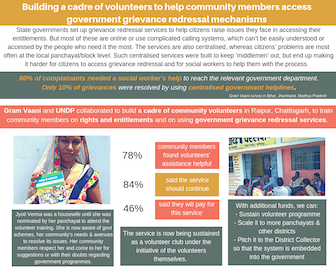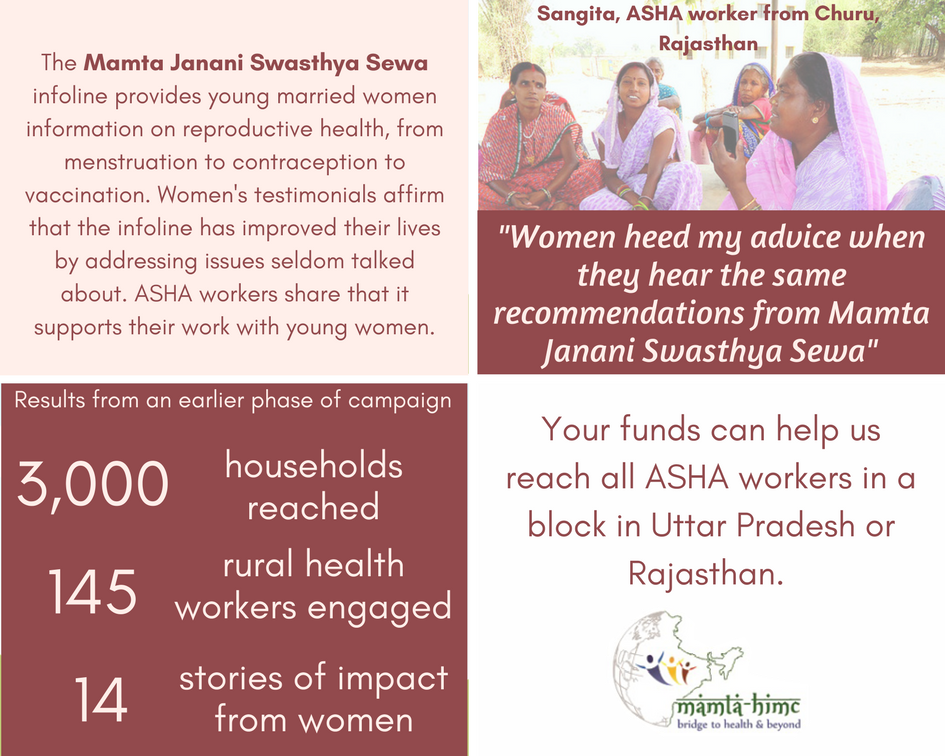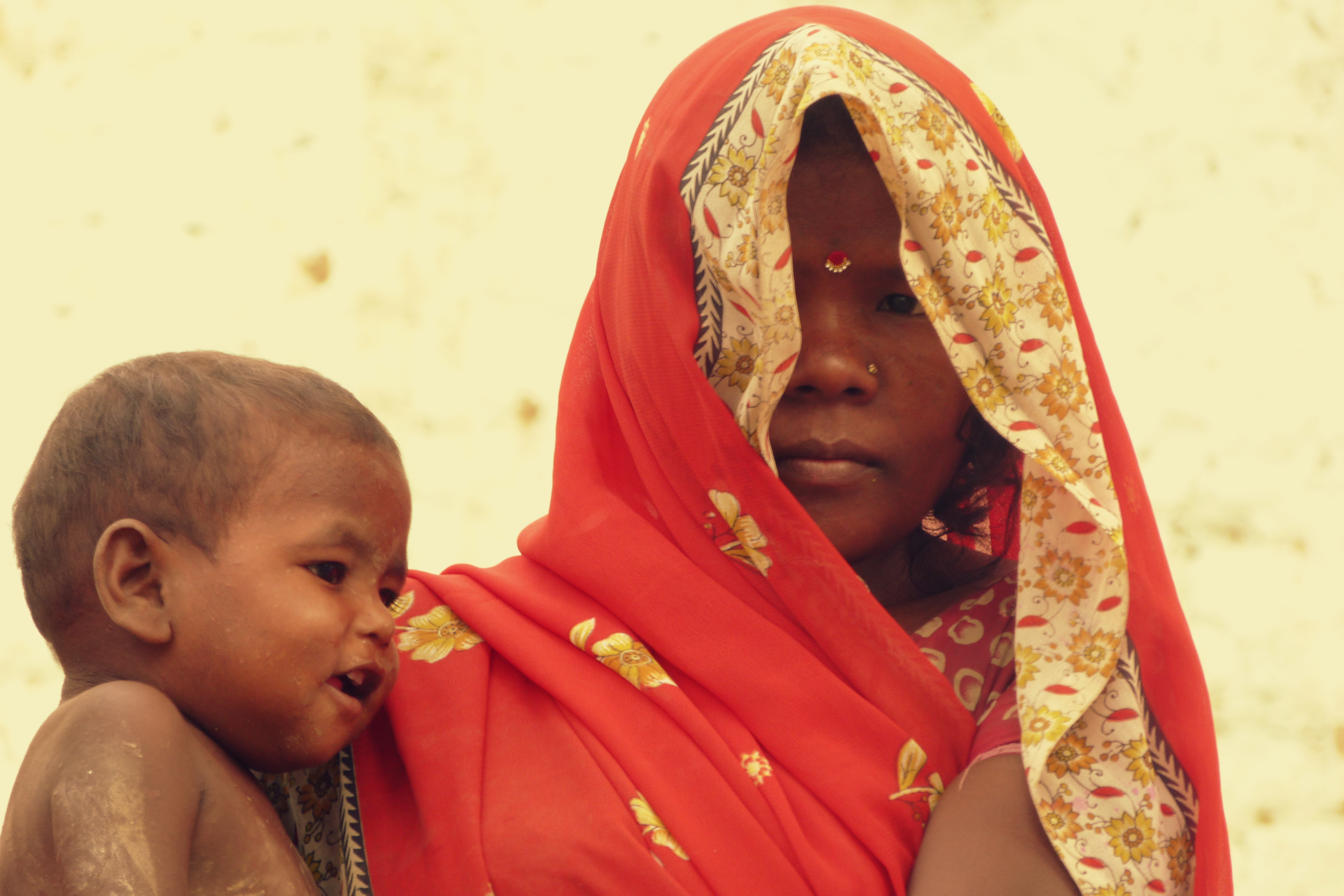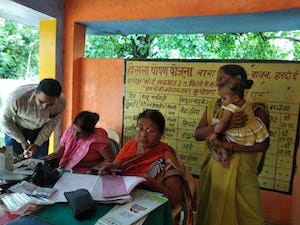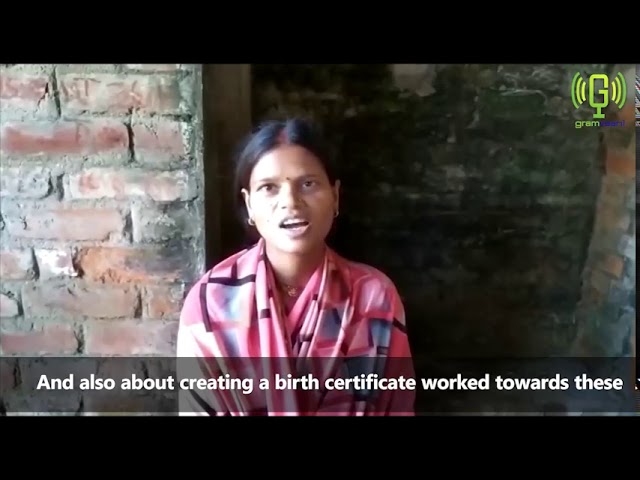Mobile phones have become instrumental in global efforts to drive awareness and encourage behaviour change to build equitable societies across the world.
Building a cadre of volunteers to help people access grievance redressal services
Government grievance redressal services are complicated and centralised, putting them out of reach and relevance of citizens in rural areas. They were built to keep...
JEEViKA Mobile Vaani: Encouraging women to access maternal health information through mobile phones
JEEViKA Mobile Vaani provides rural women information on maternal dietary diversity and complementary feeding practices. It reinforces messages on nutrition that these women hear in...
For healthier mothers, with Janani Swasthya Sewa
Janani Swasthya Sewa is an infoline designed specially for young married women on reproductive health issues such as contraception,
Extending the Galli Galli Sim Sim program to radio and phone
Did you know that the famous Sesame Street program has an Indian version as well? It is called Galli Galli Sim Sim, and is telecast...
Something For The Mothers
India has the highest number of maternal deaths in the world, an estimated 44,000 deaths every year. Despite 75% decline in the Maternal Mortality Ratio...
#GVtech4change: SnapVaxx to improve coverage and follow-up of immunization
Immunization of children in India is a task that involves a range of frontline workers, including the Accredited Social Health Activist (ASHAs)
Infotainment empowers! Forced #earlymarriage stopped
Infotainment empowers! Listen to Pooja Kumari who shares that she stopped her friend's forced #earlymarriage by calling 1098.
Enabling women to inspire each other and express themselves
Women share how they are able to express themselves, get support for livelihood and social security issues through #MeriAwaazMeriPehchaan.


